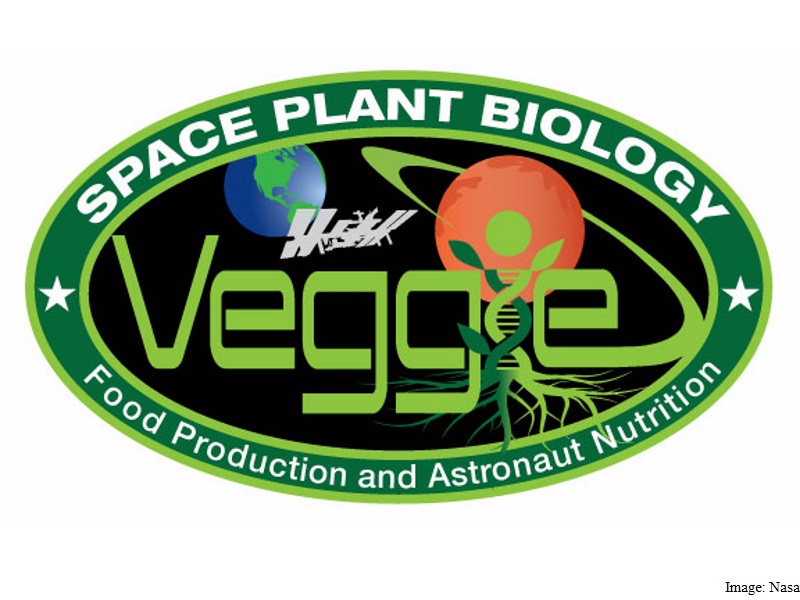- Home
- Science
- Science News
- Flowers to Bloom in Space on ISS This New Year
Flowers to Bloom in Space on ISS This New Year

Nasa astronaut Kjell Lindgren has activated the "Veggie" plant growth system and its rooting "pillows" containing Zinnia seeds on the space station.
Zinnia is a genus of plants of the sunflower tribe within the daisy family.
It is the first time that a flowering crop experiment will be grown on the orbiting laboratory, Nasa said in a statement.
Growing zinnias in orbit will help provide precursory information about other flowering plants that could be grown in space.
"Growing a flowering crop is more challenging than growing a vegetative crop such as lettuce," said Gioia Massa, Nasa Kennedy Space Center payload scientist for Veggie.
"Lighting and other environmental parameters are more critical," Massa added.
Lindgren will turn on the red, blue and green LED lights, activate the water and nutrient system to "Veggie", and monitor the plant growth.
The zinnias will grow for 60 days, which is twice as long as the first and second crop of "Outredgeous" red romaine lettuce that grew on the space station.
During the growth cycle, the LED lights will be on for 10 hours and off for 14 hours in order to stimulate the plants to flower.
"Growing the zinnia plants will help advance our knowledge of how plants flower in the Veggie growth system, and will enable fruiting plants like tomatoes to be grown and eaten in space using Veggie as the in-orbit garden," explained Trent Smith, "Veggie" programme manager at Kennedy.
Researchers also hope to gather good data regarding long duration seed stow and germination, whether pollen could be an issue, and the impact on crew morale.
Growing tomato plants on the space station is planned for 2017.
Earlier, Expedition 44 crew members, including Nasa astronaut Scott Kelly, cherished the fruits of their labour after they harvested a crop of "Outredgeous" red romaine lettuce from the "veggie plant" growth system on the orbiting laboratory for 33 days.
The astronauts cleaned the leafy greens with citric acid-based, food safe sanitising wipes before consuming them.
"Having fresh food like these available in space could have a positive impact on people's moods and also could provide some protection against radiation in space," said Dr Ray Wheeler, head of advanced life support activities at Nasa's Kennedy Space Centre in Florida.
The "Veggie" unit can also be used by astronauts for recreational gardening activities during deeper space missions including Mars.
Get your daily dose of tech news, reviews, and insights, in under 80 characters on Gadgets 360 Turbo. Connect with fellow tech lovers on our Forum. Follow us on X, Facebook, WhatsApp, Threads and Google News for instant updates. Catch all the action on our YouTube channel.
Related Stories
- Samsung Galaxy Unpacked 2025
- ChatGPT
- Redmi Note 14 Pro+
- iPhone 16
- Apple Vision Pro
- Oneplus 12
- OnePlus Nord CE 3 Lite 5G
- iPhone 13
- Xiaomi 14 Pro
- Oppo Find N3
- Tecno Spark Go (2023)
- Realme V30
- Best Phones Under 25000
- Samsung Galaxy S24 Series
- Cryptocurrency
- iQoo 12
- Samsung Galaxy S24 Ultra
- Giottus
- Samsung Galaxy Z Flip 5
- Apple 'Scary Fast'
- Housefull 5
- GoPro Hero 12 Black Review
- Invincible Season 2
- JioGlass
- HD Ready TV
- Laptop Under 50000
- Smartwatch Under 10000
- Latest Mobile Phones
- Compare Phones
- Realme P4x 5G
- OnePlus Ace 6T
- OPPO A6x 5G
- Samsung Galaxy Z TriFold
- Poco F8 Ultra
- Poco F8 Pro
- Huawei Mate 80 RS Master Edition
- Huawei Mate 80 Pro Max
- Asus ProArt P16
- MacBook Pro 14-inch (M5, 2025)
- Poco Pad M1
- Poco Pad X1
- Just Corseca Skywatch Pro
- Honor Watch X5
- Acerpure Nitro Z Series 100-inch QLED TV
- Samsung 43 Inch LED Ultra HD (4K) Smart TV (UA43UE81AFULXL)
- Asus ROG Ally
- Nintendo Switch Lite
- Haier 1.6 Ton 5 Star Inverter Split AC (HSU19G-MZAID5BN-INV)
- Haier 1.6 Ton 5 Star Inverter Split AC (HSU19G-MZAIM5BN-INV)

















